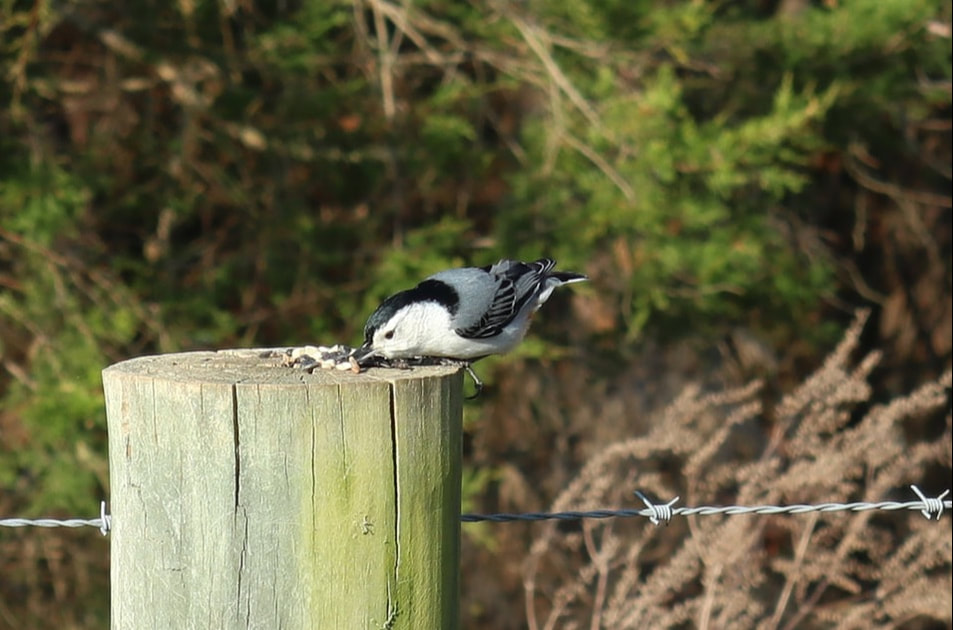 White-breasted nuthatch taking seed; Credit: Charlene Uhl White-breasted nuthatch taking seed; Credit: Charlene Uhl Sycamore Grove Farm, Madison County Nuthatches, affectionately known as the “upside down bird," are common in deciduous forests and wooded urban areas. Our farm offers them an ideal habitat: three sides of our farm are wooded, we have an abundance of nut-producing trees (its favorite food), and the hayfields offer plenty of insect meals (spiders being their favorites), as well. I have seen nuthatches at our birdfeeder, hanging upside down and poking their long beaks into the feeder. They also like to hang on the suet holder and fend off aggressive blue jays while snacking on the rich fat in the suet. We primarily have white nuthatches (Sitta carolinensis) but occasionally see a red-breasted nuthatch (Sitta canadensis). While watching these birds near the forest edge, I have seen them come for seed, then fly to the nearest tree and hide the seed in crevices – assumedly for later consumption. Sometimes they will gobble one or two seeds – then take one to hide – basically “two for now and one for later.” Like many small birds, their average life span is somewhat short: from less than one year to 3 ½ years. However nuthatches up to 10 years old have been recorded. The local population of nuthatches fluctuates widely from year to year. Scientists attribute this to the availability of seed during the winter. Nuthatches are able to walk head first down tree trunks. That is due to the structure of its feet. A nuthatch’s foot has one big toe that faces backwards, while its other three toes face forward. This helps them to see insects and insect eggs that other birds climbing up the trunk might miss. While they are one of the nosiest woodland birds in the early spring, they are relatively silent when breeding. I noticed this specifically this year. The nuthatches were “chortling” throughout the winter months. While I continue to see them every day, I have noticed they are not making any noise. It was like a switch was flipped off! According to Birds of Virginia Field Guide, nuthatches are frequently seen in mixed flocks with chickadees and Downy woodpeckers. They are all cavity nesters so maybe they take turns finding the right size cavity for their size. Birding tip: An excellent source of information on birds is Audubon’s Guide to North American Birds. This resource provides information on migration, conservation status, feeding behavior, diet, nesting and eggs, and recorded songs and calls. Check out the nasal "yank-yank” of a nuthatch so you’ll know when you hear it. Happy birding! Charlene Uhl
0 Comments
Your comment will be posted after it is approved.
Leave a Reply. |
Have a blog or blog idea?
Let us know (click) Other Blogs
VA Native Plant Society - click Brenda Clement Jones - click John Muir Laws' Blog - click Megan's Nature Nook - click Categories
All
Archives
September 2023
Blog Administrator:
Kathleen A. VMN since 2018 |